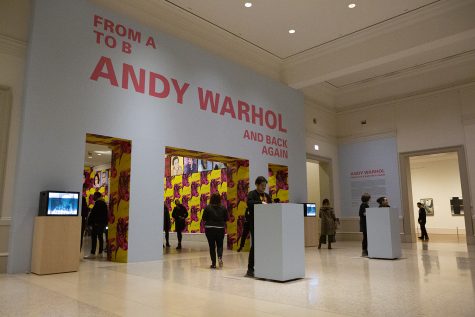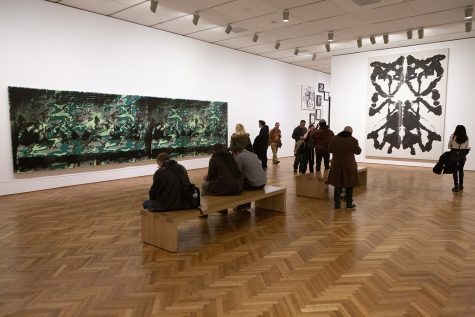The contradictions of Warhol: more than pop and color
January 22, 2020

“Andy Warhol, from A to B and back again” will remain open through Sunday, Jan. 26 at the Art Institute of Chicago, 111 S. Michigan Ave.
A vibrant painting of Marilyn Monroe, a red and green painting of an electric chair and a floor-to-ceiling painting of Mao Tse Tung––these are only a few pieces from Andy Warhol’s collection, which are now on exhibition at the Art Institute of Chicago in “Andy Warhol, from A to B and back again.”
While Warhol’s work has played a pivotal role in the media and art scene for years, it is often used today as a platform for initiating deeper conversations ranging from the quality of his work to discussions about how sexism and lack of diversity may have influenced his art and its criticism.
Debra Parr, associate professor in the Art and Art History Department, said people do not often want to see Warhol as a critic of consumer or media culture, rather they want to see him as an upbeat and celebratory figure who is viewed largely through his depiction of Campbell soup cans, Coca-Cola bottles, Marilyn Monroe and Elvis Presley.
“He is a darker figure that perhaps in this current moment where there is so much media … maybe we are seduced and addicted to it,” Parr said. “Warhol can open up a conversation about American culture and its fascination to the image.”
Parr said Warhol “really understood the power of the commodity and was himself very seduced by the power of commodity and understood how to produce himself as a commodity within that culture.”
Rachel Rotter, a junior music business major who visited the exhibit, said Warhol’s work is aligned with today’s society and how integrated it is with capitalism and pop culture.

“Andy Warhol, from A to B and back again” was organized by the Whitney Museum of American Art of New York and includes more than 400 pieces of Warhol’s artwork.
Although highly praised by many, Warhol’s work and legacy are controversial due to questions of whether his work can be considered art or a product. Warhol is also criticized by some groups for being an alleged artistic fraud and anti-feminist, tarnishing his reputation decades after his death in 1987.
Warhol’s contributions and influence has been well documented and discussed in relation to his paintings, music and movies, but his role in art history can be brought to the forefront of industry issues such as diversity and inclusion.
“Art history follows this same canon in Western artists, it’s focused on the same people: Van Gogh, Monet, Manet, Degas, Pollock, Warhol. They are all white; they are all male,” said Syvanah Carter, a senior majoring in art history and president of the Art History Association of Columbia.
At the same time, Carter praised Warhol for making art accessible.
Carter said Warhol’s art is accessible to the average person, making it easy to understand.
“Andy Warhol’s art is not presented as this elitist or grandiose thing, it’s something accessible for everyone,” Carter said. “You see Marilyn Monroe and you know exactly who that is. … You can understand the theory behind it or just appreciate it for what it is, and I think he tiptoes that line.”
“Andy Warhol, from A to B and back again” was organized by the Whitney Museum of American Art of New York and includes more than 400 pieces of Warhol’s artwork. It will remain open through Sunday, Jan. 26 at the Art Institute of Chicago, 111 S. Michigan Ave.







